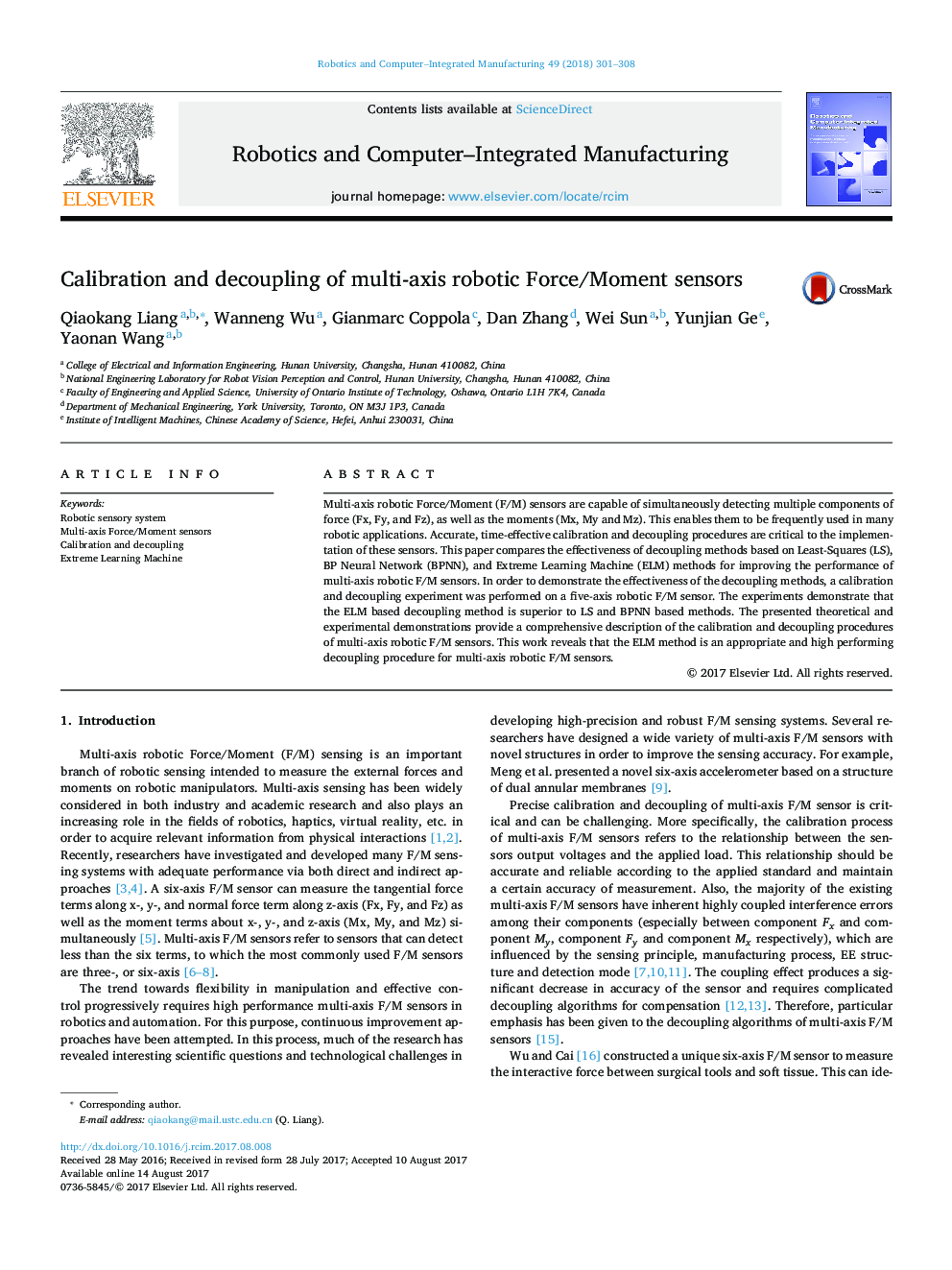| Article ID | Journal | Published Year | Pages | File Type |
|---|---|---|---|---|
| 4948952 | Robotics and Computer-Integrated Manufacturing | 2018 | 8 Pages |
â¢Calibration and decoupling algorithms for improving the performance of the multi-axis robotic F/M sensors.â¢The effectiveness of decoupling methods based on Least-Squares (LS), BP Neural Network (BPNN), and Extreme Learning Machine (ELM) methods are compared.â¢Calibration and decoupling experiment was performed on a five-axis robotic F/M sensor.â¢The theoretical and experimental demonstrations provide a comprehensive description of the calibration and decoupling procedures of multi-axis robotic F/M sensors.
Multi-axis robotic Force/Moment (F/M) sensors are capable of simultaneously detecting multiple components of force (Fx, Fy, and Fz), as well as the moments (Mx, My and Mz). This enables them to be frequently used in many robotic applications. Accurate, time-effective calibration and decoupling procedures are critical to the implementation of these sensors. This paper compares the effectiveness of decoupling methods based on Least-Squares (LS), BP Neural Network (BPNN), and Extreme Learning Machine (ELM) methods for improving the performance of multi-axis robotic F/M sensors. In order to demonstrate the effectiveness of the decoupling methods, a calibration and decoupling experiment was performed on a five-axis robotic F/M sensor. The experiments demonstrate that the ELM based decoupling method is superior to LS and BPNN based methods. The presented theoretical and experimental demonstrations provide a comprehensive description of the calibration and decoupling procedures of multi-axis robotic F/M sensors. This work reveals that the ELM method is an appropriate and high performing decoupling procedure for multi-axis robotic F/M sensors.
